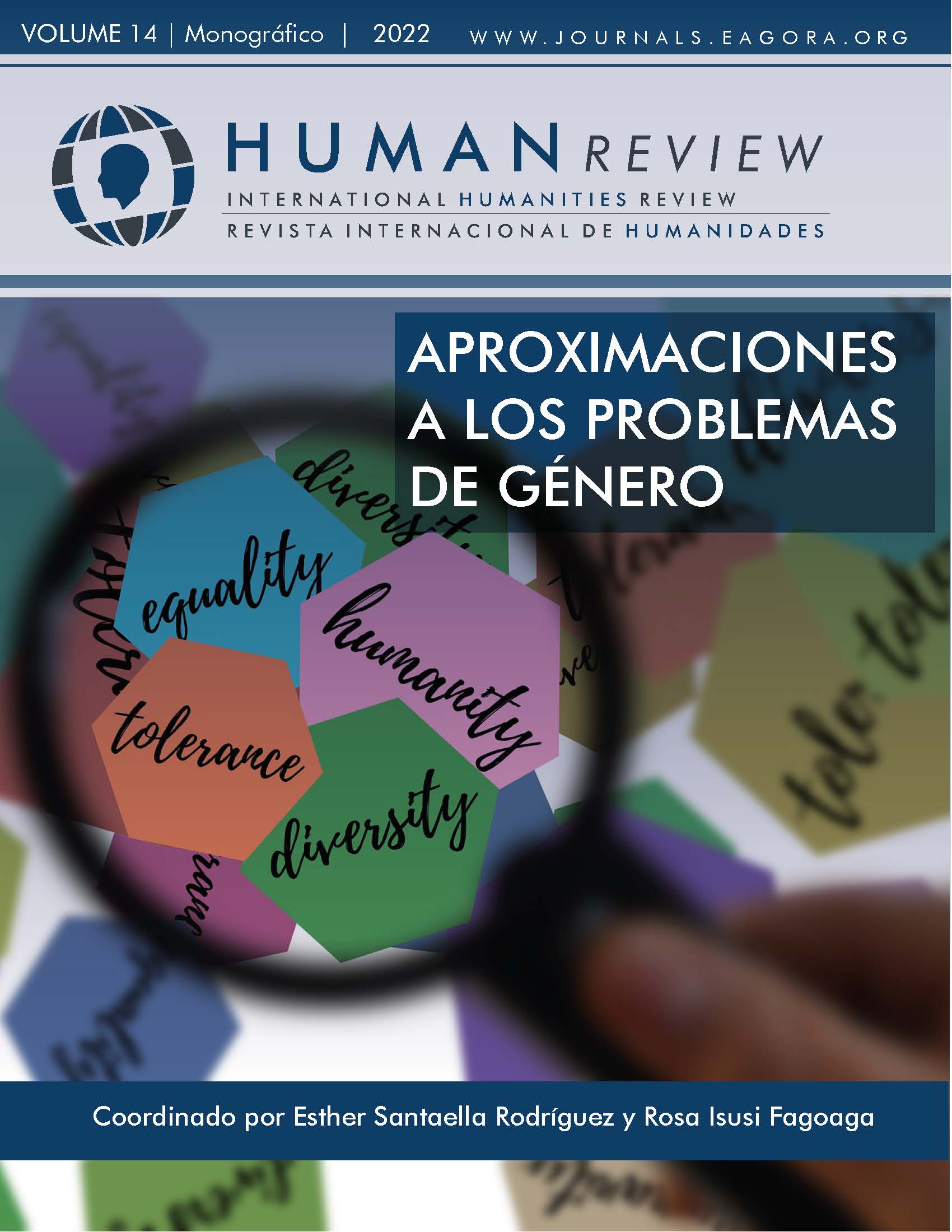Body and Identity. Actions and Representations
Artistic creation as a vehicle for analysis and learning
DOI:
https://doi.org/10.37467/revhuman.v11.4324Keywords:
Art, Body, Identity, Inclusion, Performance, Stereotypes, Gender EqualityAbstract
If we consider how the image and stereotypes influence the construction of the identity of primary and secondary students, it is essential to work on it in the classroom. Delimited in the actions and representations that are made about one’s own body and that of others in art, social networks, and advertising, we break down the information to rethink it and generate open discourses, debates and develop a critical thinking of the students about these questions. The project is carried out from art, adopting a transversal and multidisciplinary point of view, in the initial training of teachers.
References
Alonso M. C. G. (2021). La „pararealidad“ en redes sociales: ¿sentimos todo lo que decimos? In Digital media: el papel de las redes sociales en el ecosistema educomunicativo en tiempos de Covid-19 (pp. 649-672). McGraw-Hill Interamericana de España.
Baigorri, L., y Ortuño, P. (2021). Cuerpos conectados: arte, identidad y autorrepresentación en la sociedad transmedia / DOI: https://doi.org/10.2307/j.ctv1s7cjm5
Caballero-Gálvez, A. A., & Herrero-Jimenez, B. (2017). Representaciones de género en las redes móviles de contactos cuerpo e identidad en «adopta un tío. Prisma Social, 2017, 31-56.
Castanyer, O. (2014). La asertividad expresión de una sana autoestima. Serendipity.
Cebrián, A., y Rocu, P. (2019). Arte, cuerpo e identidad para una investigación-acción participante con estudiantes afrodescendientes. Arteterapia (Madrid), 14, 113-129. 10.5209/arte.62572 DOI: https://doi.org/10.5209/arte.65091
Dass, A. (2016). Humanae. https://angelicadass.com/es/fotografia/humanae/
Finol, J. Cuerpo e identidad: Espacio, lugares y territorios Utopía y Praxis Latinoamericana, vol. 23, núm. Esp.3, 2018 Universidad del Zulia, Venezuela.
Garland-Thomson, Rosemarie. (2002). Integrating Disability, Transforming Feminist Theory. NWSA Journal. 14. 1-32. 10.1353/nwsa.2003.0005. DOI: https://doi.org/10.2979/NWS.2002.14.3.1
Greenberg, L. (2000). Emociones: una guía interna. Desclée de Brouwer.
Esteban, M. L. (2013). Antropología del cuerpo: género, itinerarios corporales, identidad y cambio (2ª ed. ed.). Bellaterra.
Fernández Valencia, A., y Cao, M. (2011). Contar con el cuerpo: construcciones de la identidad femenina (1ª ed. ed.). Fundamentos.
Ferrer, U. (2021). El lugar de la empatía en la intersubjetividad. Investigaciones Fenomenológicas, 1(18), 77–92. Recuperado a partir de https://revistas.uned.es/index.php/rif/article/view/32535
Finol, J. (2018). Cuerpo e identidad: Espacio, lugares y territorios Utopía y Praxis Latinoamericana, vol. 23, núm. Esp.3, Universidad del Zulia, Venezuela.
Macaya, A. (2016). Cuerpo e identidad: artes visuales para una hermenéutica de la diferencia. Experiencias con maestros en formación inicial. Arteterapia (Madrid), 11, 13-30. 10.5209/ARTE.54112 DOI: https://doi.org/10.5209/ARTE.54112
Maisa, M. A. (2018). Superficies simbólicas. Piel, Vestimenta, Identidad.
Piastro, J. (2019). Los lenguajes de la identidad. La subversión como creación. Herder.
Recalde, M. M. (2018). Cuerpo e identidad: sexo y género, a través del tiempo.
Ortiz, L. M. (2014). Cuerpos e identidades on line: construcción de identidades corporales en el chat. Colombian Applied Linguistics Journal, 15(2), 302-309. 10.14483/udistrital.jour.calj.2013.2.a 011 DOI: https://doi.org/10.14483/udistrital.jour.calj.2013.2.a011
Piñero, E. (2011). La prisión del cuerpo: reflexiones en torno a la corpo/realidad inestable. En M. Calafell y A. Pérez (Eds.), El cuerpo en mente: versiones del ser desde el pensamiento contemporáneo (pp. 199-209). Universitat Autónoma de Barcelona.
Sánchez, C. (2011). Violencia física, identidades corporales, desafíos escolares. En N. Durán Amavizca y M. Jiménez Silva (Eds). Cuerpo, sujeto e identidad. Plaza y Valdés Editores.
Sánchez Martínez, J. A. (2010). La comunicación sin cuerpo: Identidad y virtualidad. Revista Mexicana De Ciencias Políticas Y Sociales, 52(209), 37-52. DOI: https://doi.org/10.22201/fcpys.2448492xe.2010.209.25962
Van der Kolk, B. (2020). El cuerpo lleva la cuenta. Cerebro, mente y cuerpo en la superación del trauma. Editorial Eleftheria
Downloads
Published
How to Cite
Issue
Section
License
Those authors who publish in this journal accept the following terms:
- Authors will keep the moral right of the work and they will transfer the commercial rights.
- After 1 year from publication, the work shall thereafter be open access online on our website, but will retain copyright.
- In the event that the authors wish to assign an Creative Commons (CC) license, they may request it by writing to publishing@eagora.org









